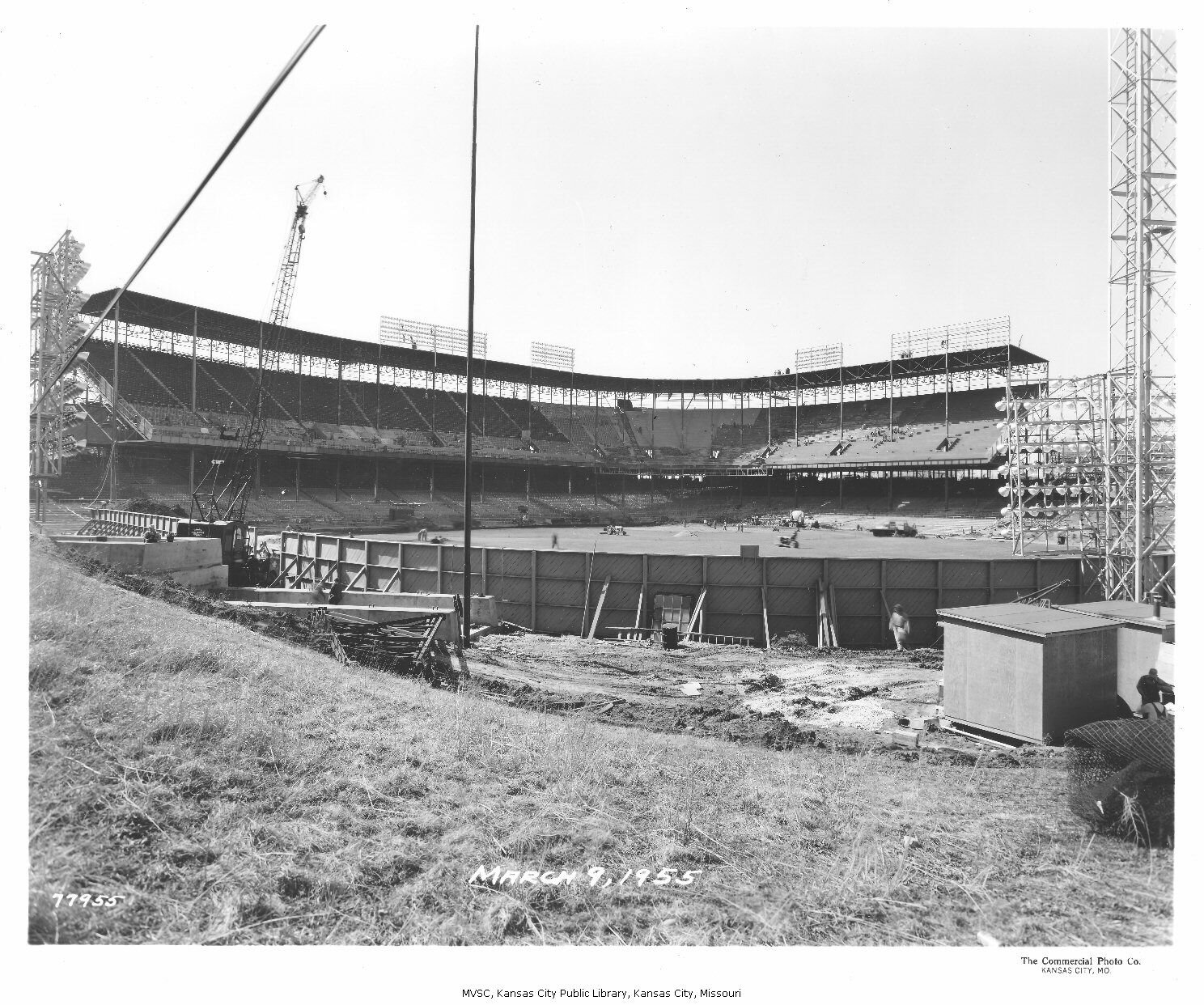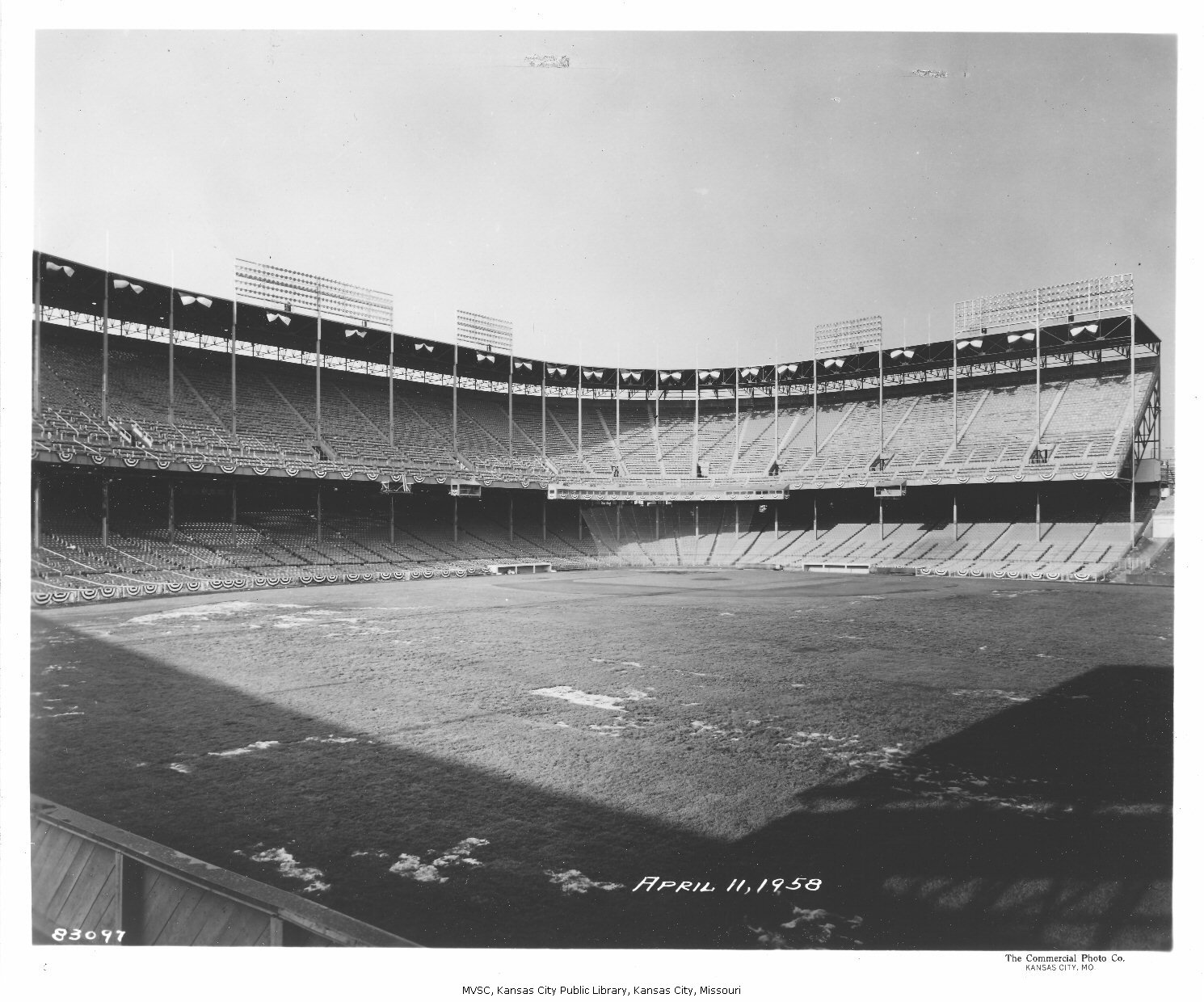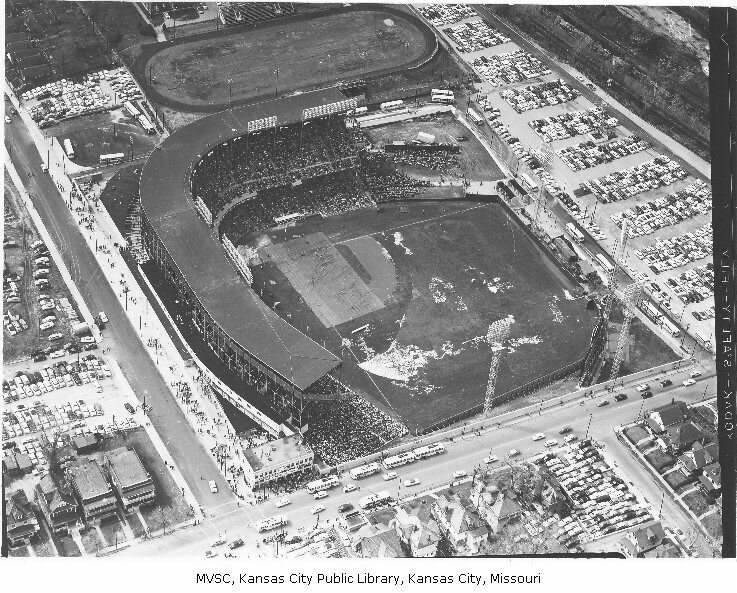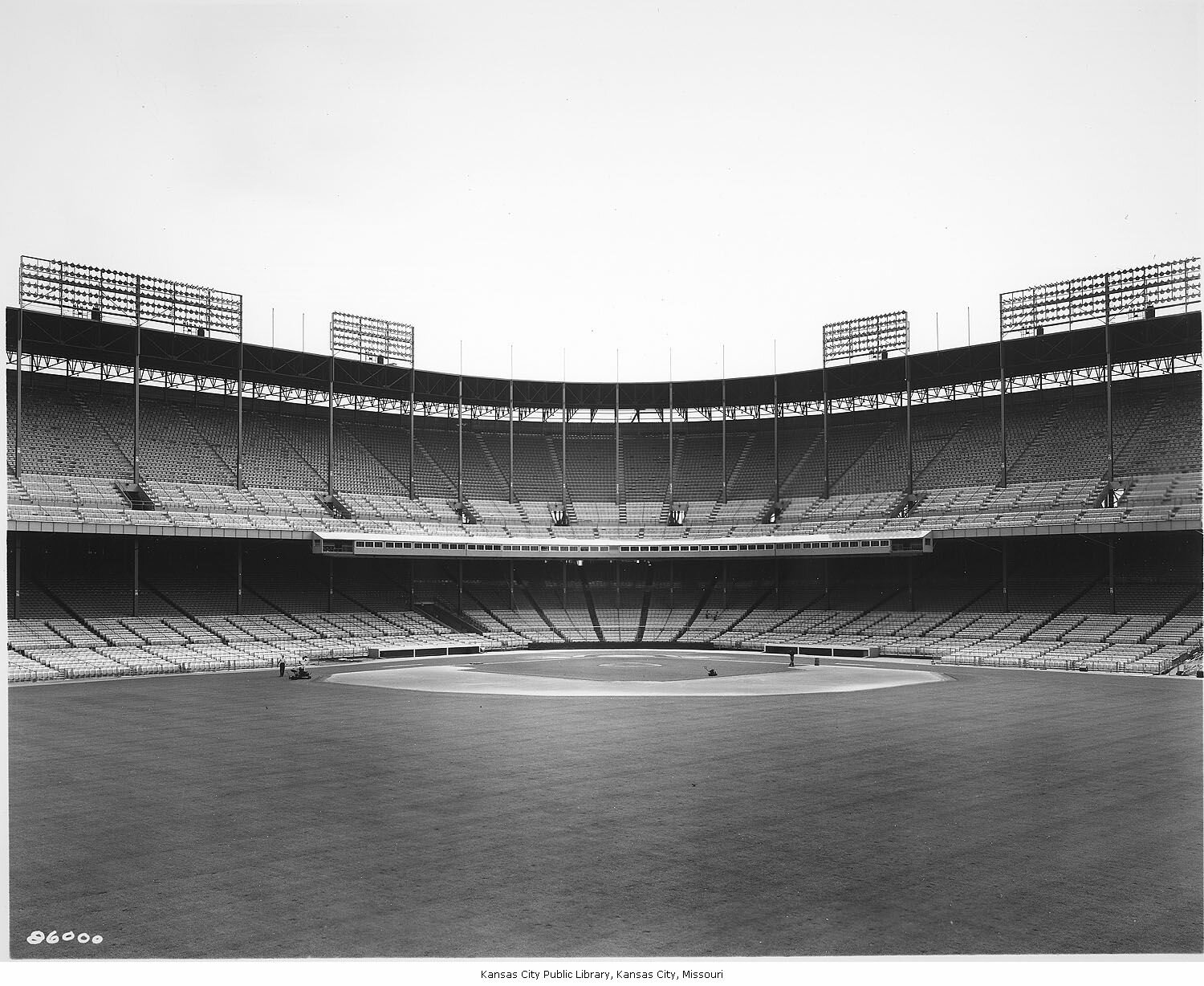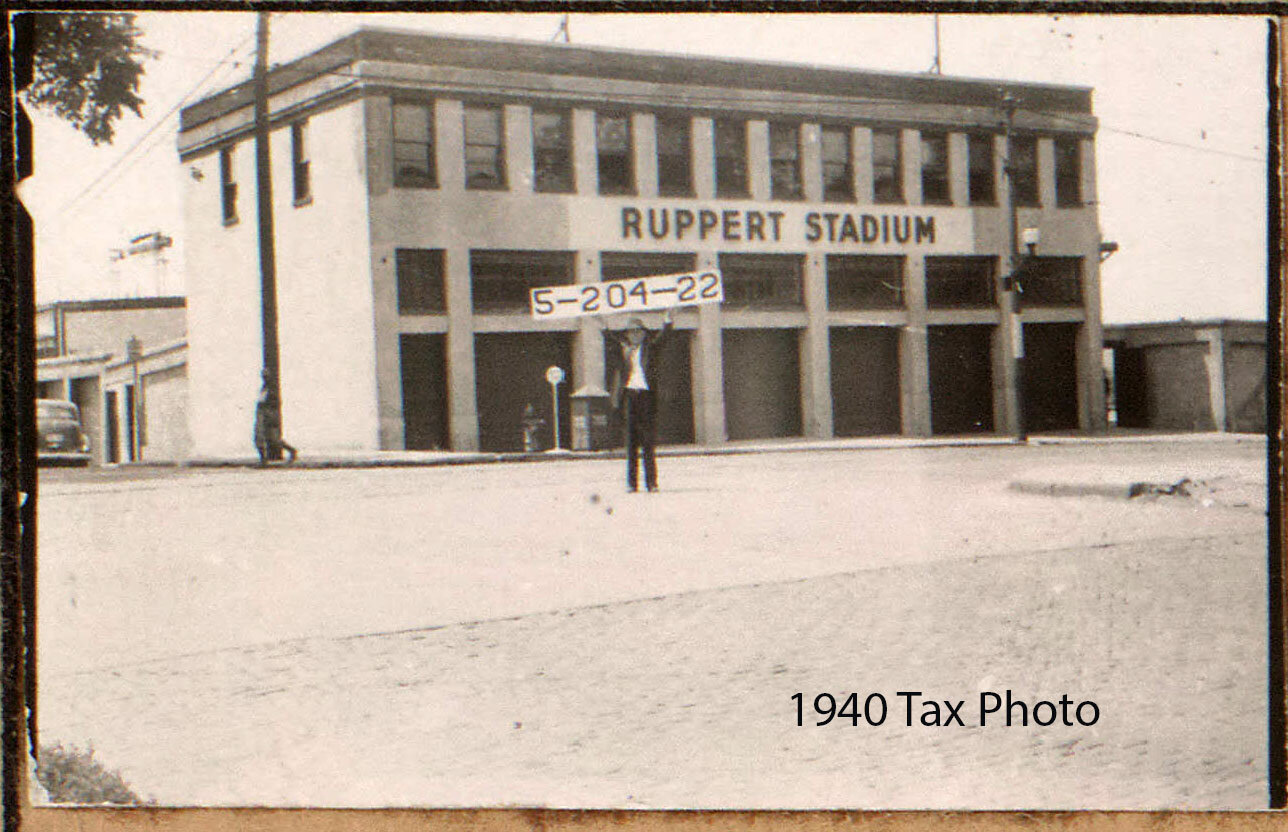
Municipal Stadium
22nd and Brooklyn Avenue (demolished)
Municipal Stadium
This site was once home to many different sports teams. The Municipal Stadium once stood at 22nd and Brooklyn Avenue. The original stadium was built in 1923. George Muehlebach had the stadium park, Muehlebach Field, built for his Minor League Baseball team, the Kansas City Blues. During the time of the Blues and years after, until 1954, the stadium was also used by the Kansas City Monarchs, a Negro League team.
Until the mid-1900’s, baseball was segregated into two leagues, the MLB and the Negro Leagues. The Negro Leagues created an entertaining competitive environment. They were also paid much less than Major Leagues athletes, which increased the league’s popularity because of the cost. In 1924 the Kansas City Monarchs claimed their first World Series title. As history progressed the Monarchs encountered well-known athletes; a couple of those elite players that worked with the Kansas City Monarchs were Jackie Robinson and Buck O’Neil. These former players were certainly involved in breaking racial barriers.
Jackie Robinson didn’t play long on the Monarchs, but had a definitive impact on the city and even the league as a whole. Robinson joined the Kansas City Monarchs after serving in the military. After spending a single season with the Monarchs, Robinson was quickly noticed and scouted by the Brooklyn Dodgers. Robinson, who was not under formal contract with the Monarchs, was able to sign with the dodgers almost immediately. Jim Crow baseball policies changed when Robinson made this deal in 1945 to go the major leagues. Racial barriers were being crossed with Jackie Robinson becoming the first black person to sign with a Major Leagues team. Soon after Robinson, many more black athletes also moved out of the Negro Leagues and into the Major Leagues.
Buck O’Neil is a recognizable name in the Kansas City area. O’Neil was not just a player for the Kansas City Monarchs but also became a manager of the Monarchs in his later years, staying with the team until 1955. It wasn’t long after the integration of the Major Leagues that the Negro Leagues noticed a deteriorating league. O’Neil took a scouting job for the Chicago Cubs that would eventually lead to him becoming named the Major’s first black coach by the Cubs in 1962.4 O’Neil gave back to the Kansas City area by founding the Negro Leagues Baseball Museum and was part of the museum’s Board.
During the Monarchs seasons in Kansas City, the stadium went through a few name changes. The original stadium, “Muehlebach Field,” was renamed “Ruppert Stadium” in 1937, after the New York Yankees negotiated a deal to purchase the Blues. Then became “Blues Stadium” in 1943. The major league Kansas City Athletics were moving to town in 1955. The stadium underwent complete reconstruction and eventually became what is now known as “Municipal Stadium” since 1955.
The stadium was demolished in 1976 and was remembered as the home to many sports teams. Municipal Stadium and all its history are now represented by an outdoor memorial site. The memorial park does not take up nearly as much room as the stadium once did. Most of the property from the stadium park has since been sold off for housing developments.
Bibliography
“Breaking the Color Line: 1940 to 1946 .” The Library of Congress. Accessed December 12, 2019. https://www.loc.gov/collections/jackie-robinson-baseball/articles-and-essays/baseball-the-color-line-and-jackie-robinson/1940-to-1946/.
“Buck O'Neil Center - Negro League Baseball Museum - Kansas City, MO.” Negro Leagues Baseball Museum. Accessed December 12, 2019. https://nlbm.com/buck-oneil-center/.
“John ‘Buck’ O'Neil.” Negro Leagues Baseball eMuseum. Accessed December 12, 2019. https://www.nlbemuseum.com/history/players/oneil.html.
Munsey, Paul, and Corey Suppes. “Municipal Stadium.” Ballparks, April 2006. https://ballparks.com/baseball/american/kcymun.htm.
“Negro Leagues Team Information.” Major League Baseball. Accessed December 12, 2019. http://mlb.mlb.com/mlb/history/mlb_negro_leagues_teams.jsp.
Roe, Jason, and Kansas City Public Library. “A Beer Baron Is Born.” KC History. Accessed December 12, 2019. https://kchistory.org/week-kansas-city-history/beer-baron-born.
Content Provided by
Carter Grissom, student at the University of Missouri Kansas City as part of Dr. Sandra Enriquez’s Urban History Class.
